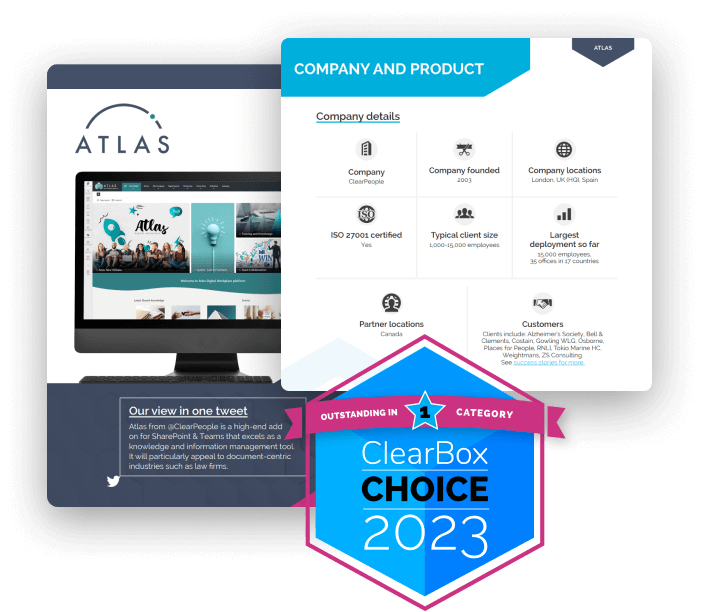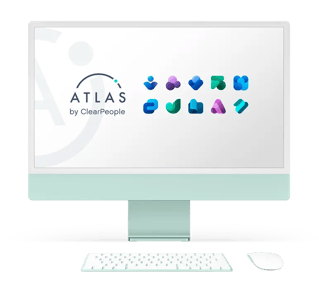The aim of an employee experience platform is to help employees bring about balance to their working lives. The modern working life is becoming increasingly digitalised. This has many benefits including more flexibility and convenience within the working day.
To utilise these benefits, organisations must create a positive employee user experience for their workers. If an organisation fails to achieve this, then the application of technology within a person’s working life can become overwhelming and effect an employee’s ability to manage their time effectively. This can then have a knock-on effect to a lot of areas within an employee’s life: efficiency to do their job, work/life balance, mental wellbeing and confidence can become adversely effected.
In this blog:
If not managed properly, today’s working life could be deemed as hectic. A lot of organisations have adopted hybrid working policies. This means employees could be working from a number of different locations in a single day, never mind a week. This constant toing and throwing from work, means employees can miss vital information if proper communication channels haven’t been established and designed to reach out to people on the move and working from home.
Without proper consideration into the digital employee experience, a person could be working in an organisation that has high ‘digital bureaucracy’. From the end user perspective ‘digital bureaucracy’ is when an organisation causes employees to feel overwhelmed through enforcing excessively complicated administrative procedures, on poorly designed digital platforms. Think about the amount of time wasted sometimes trying to find a document. IT protocol driven by governance frameworks in which people have to operate within can also add to digital bureaucracy. People will get easily confused and not understand how to do things correctly if the employee experience isn’t properly considered.
A person’s digital dexterity can also inhibit productivity. Tech savviness plays a crucial role in an employee’s ability and reluctance to embrace existing or emerging technology within a business. An organisation must come up with ways to support the different levels of absorption of technologies within a business.
The following statistics really drive these problems home:
It is no wonder that people are feeling increasingly stressed, disconnected and disengaged. The above statistics indicate that people are working within increasingly complicated digital landscapes that are literally causing overwhelm. It is therefore critical that businesses introduce initiatives that alleviate stress related symptoms. According to Microsoft there are six key elements to a great employee experience:

As we’ve transcended into the digital era with record purchases being made online and the power of social media platforms, companies now take User Experience (UX) very seriously. UX is all about how a user interacts with a system and is gauged on whether their experience is a positive or a negative one. This is based on the user’s perception of things like ease of use and efficiency.
Think about the front-end interface a consumer uses whilst shopping online. Companies such as Google, Facebook, and Amazon operate dozens of back-end systems, but the consumer doesn’t see any of this. They just see a single, front end interface. If a consumer had to navigate through dozens of systems just to browse or purchase an item, they would have a terrible user experience. They would feel confused and wouldn’t be able to achieve what they set out to do. Employees trying to navigate a barrage of increasingly complex digital systems feel no differently, and if confronted with this would have a bad user experience.
An employee experience platform aims to enhance the employee experience, not hinder it. It’s a front-end digital interface that brings together the tools and support an employee needs to:
It puts the person at the center by providing them with everything they need whilst ensuring that the business can communicate everything it requires, to all employees. Everyone can be reached no matter what their geographical location, or work from home/office patterns are.
An employee experience platform needs to also provide different levels to the user experience. Think about an employee who has just joined the organisation. They will need the specific digital tools to do their job and obviously training to support their actual role too. They also need to get to grips with the culture of the organisation and their associated team. The organisation needs to maintain clear communication channels with the new employee. A well-designed employee experience platform should be able to facilitate the absorption of company culture in ways that keep the new employee connected and engaged.
Companies need to think holistically if they want to enhance the quality of the experiences people have within and their working lives. Leveraging human-centered and experience-driven technology can enhance the experience of work if it is properly thought out.
 |
ClearBox Intranet and Employee Experience Platforms Report 2023ClearBox Consulting's annual report is the buyer’s guide to intranet and employee experience platforms. Download this report if you:
|
An employee experience platform should help employees identify ways to balance their well-being and productivity, and to respond to changing needs over time, throughout their career with the company. Managers should be able to develop their teams and respond to employee needs, helping them improve team performance and work/life balance. Business leaders should also have access to stats and areas such as productivity and engagement. They can then make more informed decisions through analysis, understanding and guiding how work happens.
Microsoft have coined their employee experience platform ‘Microsoft Viva’ as an “organising layer”. Microsoft Viva is set out into 4 modules:
![]()
The Microsoft Viva modules are powered by Microsoft 365 tools such as Teams. The employees experience the modules within the tools they are already familiar with and use every day.
> Microsoft Viva explained. All you need to know about Microsoft Viva.
 Atlas fully integrates with the Microsoft Viva Employee Experience Platform as well as Microsoft 365 to bring about a holistic user experience. It is the glue that brings all Microsoft tools together through a visually engaging and intuitive interface. This makes user interactions logical and easy to navigate.
Atlas fully integrates with the Microsoft Viva Employee Experience Platform as well as Microsoft 365 to bring about a holistic user experience. It is the glue that brings all Microsoft tools together through a visually engaging and intuitive interface. This makes user interactions logical and easy to navigate.
Behind the scenes it structures the information held within the tools (this is something that is not automatically done within Microsoft 365). It ensures that only information highly specific and relevant to the person using it, is surfaced. This provides users with the information they need without overwhelming them. Hence ensuring business users are empowered and not hindered by technology.
Atlas solves a lot of the typical kinds of challenges a user could face such as finding information quickly and easily. This saves a lot of time and frustration which are factors that can strongly impact enterprise productivity.
This enhanced employee experience encourages knowledge-based relationships by empowering people and teams to achieve even more.
In summary, Atlas makes finding and sharing information in Microsoft Office 365 intuitive, with tools that engage users to capture knowledge. It’s a digital platform that enables successful digital working by providing an anchored hub that caters to specific user needs. This structure provides the user with everything that they need to complete the tasks to do their job.
Subscribe to our newsletter
This site is protected by reCAPTCHA and the Google Privacy Policy and Terms of Service apply.